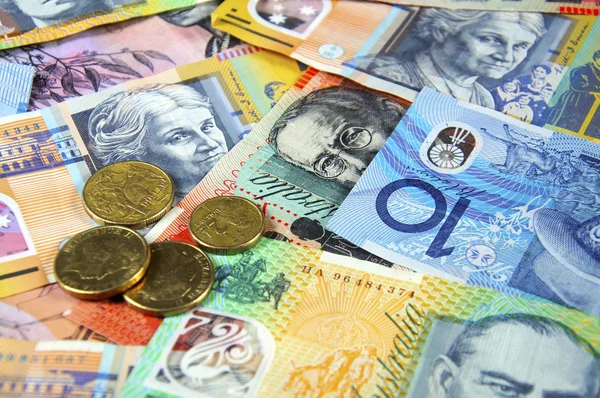The Australian Dollar (AUDUSD) remains subdued, hovering around 0.6414, as traders tread cautiously ahead of Fed Chair Jerome Powell’s speech at the Jackson Hole Symposium. With the pair logging four straight days of losses, risk appetite remains muted, driven by strong US data and growing uncertainty around the pace of monetary easing on both sides of the Pacific.
Commodity Prices Add Pressure on the Aussie
The Australian Dollar is also feeling the weight of sliding commodity prices, particularly in key exports like iron ore and coal. With China’s industrial output slowing, demand for Australian commodities has weakened, reducing export revenues and putting additional pressure on the currency.
If Beijing introduces stimulus measures to bolster manufacturing and infrastructure activity, it could provide a medium-term boost to the Aussie. However, until signs of a rebound in commodity demand emerge, the AUD/USD pair is likely to remain capped by these external headwinds.
Market Sentiment Remains Cautious
Investor sentiment remains guarded across global markets, with traders avoiding large directional bets ahead of Powell’s Jackson Hole remarks. Although equity indices have shown modest gains, the broader tone remains one of risk aversion, which tends to favor the US Dollar over risk-sensitive currencies like the Aussie.
Until there is clear guidance from the Fed on the policy trajectory, the Australian Dollar is likely to stay under pressure, particularly against a backdrop of uncertainty in global trade and monetary policy shifts.
Strong US Data Keeps the Dollar in Control
The US Dollar Index (DXY) is steady near 98.60, buoyed by upbeat S&P Global PMI figures:
Composite PMI: 55.4 vs. 55.1 prior
Manufacturing PMI: 53.3 vs. 49.8 prior
Services PMI: 55.4 vs. 54.2 expected
These readings reinforce confidence in US economic resilience, diminishing the urgency for aggressive Fed rate cuts. However, Initial Jobless Claims rose to 235K, the highest in eight weeks, signaling early signs of stress in the labor market.
Jackson Hole in Focus for Policy Clarity
Markets are laser-focused on Powell’s remarks, seeking a roadmap for the September FOMC meeting. A hawkish signal could strengthen the Dollar further, pushing AUD/USD toward fresh lows, while a dovish tilt might spark a short-lived recovery in the Aussie.
RBA’s Measured Approach Caps AUDUSD Recovery
Domestically, the Reserve Bank of Australia (RBA) delivered a 25 bps rate cut this month, trimming the Official Cash Rate to 3.6%. Though the move was widely anticipated, traders now see the potential for a larger 50 bps cut in November, keeping the AUDUSD under pressure.
On the data front, Australia’s economy is showing pockets of resilience:
Manufacturing PMI: 52.9 vs. 51.3 prior
Services PMI: 55.1 vs. 54.1 prior
Composite PMI: 54.9 vs. 53.8 prior
In addition, Westpac Consumer Confidence jumped 5.7% to 98.5, its highest reading since February 2022. Analysts caution, however, that sustaining momentum could still require further policy easing.
Global Headlines Shape Sentiment
Markets are also keeping an eye on geopolitical developments:
The White House confirmed preparations for a Russia-Ukraine bilateral meeting, signaling progress in peace efforts.
US-China talks are reportedly constructive, with Treasury Secretary Scott Bessent predicting improved US growth in Q4 and noting that current trade frameworks remain highly effective.
Such developments could ease demand for the safe-haven Dollar and provide short-term relief for risk-sensitive currencies like the Aussie.
AUDUSD Technical Snapshot
Technically, AUDUSD trades just above the 0.6400 key support level, with the following levels to watch:
Immediate Support: 0.6400, followed by 0.6365
Immediate Resistance: 0.6480 and 0.6525
A sustained break below 0.6400 could deepen losses toward the 0.6360 area, while a recovery above 0.6480 would be needed to shift momentum back in favor of the bulls.
Conclusion: Volatility Ahead of Powell
With traders awaiting Powell’s remarks, the short-term bias for AUDUSD remains cautious. Any hawkish hint from the Fed could push the pair into new lows, while a softer tone may ignite a technical rebound. For now, the balance of risks appears tilted in favor of the Dollar, keeping the Australian currency on the defensive.









